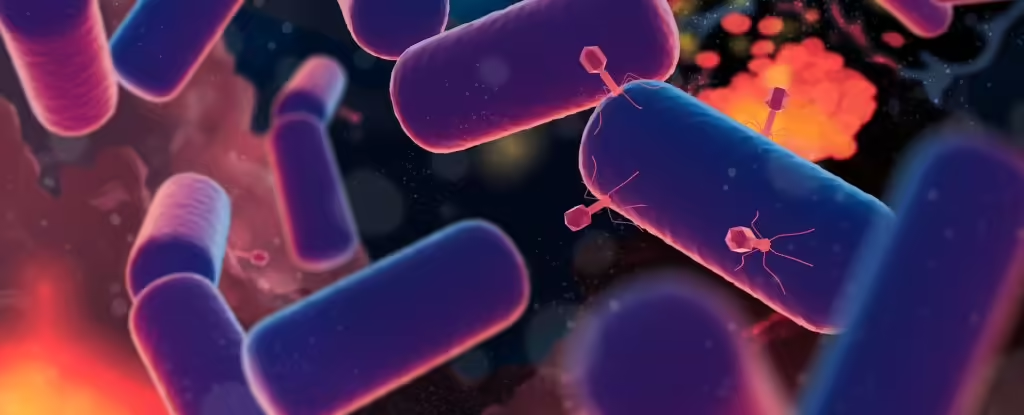Unraveling the secrets of LUCA, the oldest life form on Earth
- July 17, 2024
- 0
A study by the University of Bristol has revealed that life on Earth emerged from a common ancestor called LUCA shortly after the planet formed. Using genetic analysis
A study by the University of Bristol has revealed that life on Earth emerged from a common ancestor called LUCA shortly after the planet formed. Using genetic analysis

A study by the University of Bristol has revealed that life on Earth emerged from a common ancestor called LUCA shortly after the planet formed.
Using genetic analysis and evolutionary modeling, researchers identified LUCA’s existence approximately 4.2 billion years ago and showed that it was a complex organism with an early immune system that was an integral part of Earth’s earliest ecosystems.
Everything alive today is descended from a single common ancestor, affectionately known as LUCA (Last Universal Common Ancestor).
LUCA is the presumed common ancestor from which all modern cellular life, from single-celled organisms like bacteria to giant sequoia trees (and us humans), has descended. LUCA represents the root of the tree of life before it split into the groups we know today: bacteria, archaea, and eukaryotes. Modern life evolved from LUCA from several sources: the same amino acids that are used to make proteins in all cellular organisms, a common energy currency (ATP), the existence of cellular machinery like ribosomes and others that play a role in making proteins from information stored in the cell. DNA, and even the fact that all cellular life uses DNA itself as a way to store information.
The team compared all the genes in the genomes of living species by counting the mutations that had occurred in their sequences over time since they shared a common ancestor in LUCA. The time when some species split is known from fossils, so the team used the genetic equivalent of a well-known equation used in physics to calculate speed to determine when LUCA existed, and arrived at an answer of 4.2 billion years ago, about four hundred million years ago. Many years after the formation of the Earth and our solar system.
Co-author Dr Sandra Alvarez-Carretero, from Bristol School of Earth Sciences, said: “We did not expect LUCA to be so old; only hundreds of millions of years have passed since the Earth formed. However, our results are consistent with current views on the habitability of the early Earth.”
The team then developed LUCA biology by modelling the physiological traits of living species through the family tree of life before LUCA. Lead author Dr Edmund Moody explained: ‘The evolutionary history of genes is complex because of variation across lineages. We need to use complex models of evolution to reconcile the evolutionary history of genes with the family tree of species.’
Co-author Dr Tom Williams, from Bristol’s School of Biological Sciences, said: “One of the real advantages is applying the gene-tree-species-tree alignment approach to such a diverse dataset representing the main domains of life in archaea and bacteria. This allows us to say and predict with some confidence this level of certainty about how LUCA lived.”
Co-author Professor David Pisani said: “Our research shows that LUCA was a complex organism not too different from modern prokaryotes, but what is really interesting is that it clearly had an early immune system, suggesting that 4.2 billion years ago our ancestor was engaged in an arms race with viruses.”
Co-author Tim Lenton (School of Geography, University of Exeter) said: “It is clear that LUCA uses and modifies the environment, but it is unlikely to live alone. Its waste will become food for other microbes, such as methanogens, which will help to create a recycling ecosystem.”
“The findings and methods used in this study will also be useful for future studies that will look in more detail at the later evolution of prokaryotes in light of Earth history, including less studied archaea with their methanogenic representatives,” added co-author Professor Anja Spang (Royal Netherlands Institute of Marine Research).
Co-author Professor Philip Donoghue said: “Our study brings together data and methods from many disciplines, paving the way for an understanding of early Earth and life that cannot be achieved through any single discipline. It also shows how quickly an ecosystem was established on early Earth. This suggests that life could have developed in Earth-like biospheres elsewhere in the universe.”
Source: Port Altele
As an experienced journalist and author, Mary has been reporting on the latest news and trends for over 5 years. With a passion for uncovering the stories behind the headlines, Mary has earned a reputation as a trusted voice in the world of journalism. Her writing style is insightful, engaging and thought-provoking, as she takes a deep dive into the most pressing issues of our time.